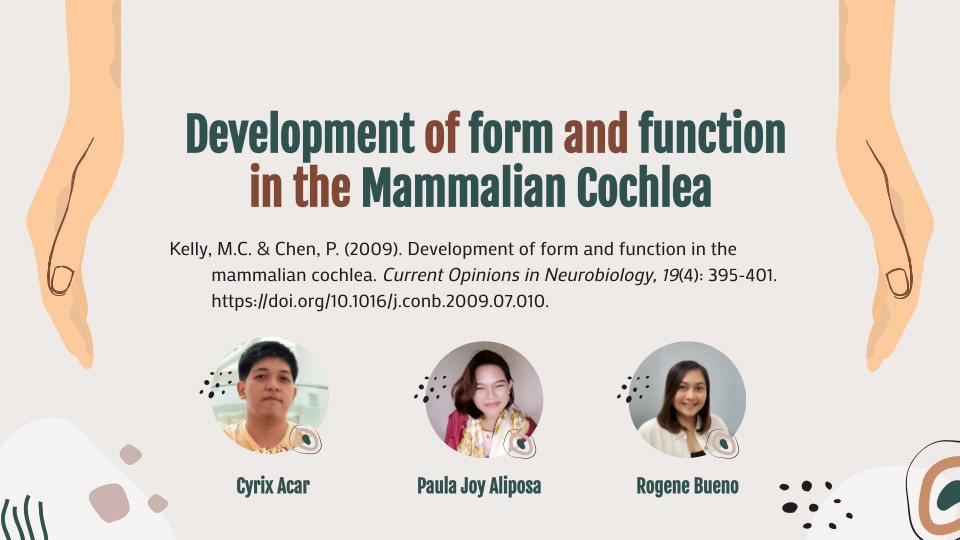Good day, Ma'am!
Here are our responses to your questions.
1. Based on the studies conducted by Hayashi et al. (2008) and Dabdoub et al. (2008), the number of resulting sensory cells are neither specific nor definite. Instead, the number of the sensory cells is variable and dependent on how the prosensory cells maintained the expression of certain transcriptional factors (Sox2), and whether FGF signaling components are inhibited or deleted. Irregularities in could lead to severe reduction in the number of sensory cells in the cochlea.
2. The hair cells of the cochlea are responsible in hearing and balance. The vibrations from soundwaves shake the hairs attached which are then transferred to the cells and are transformed into electrical signals which are sent to the brain to be understood. The hair cells are also accompanied by the endolymph which is a special fluid with a higher charge potential from the rest of the body because of higher k+ ion concentration. Excessive vibrations can cause hair cells to be damaged while improper ion concentration can weaken the mechanotransduction of the cells which all result to hearing loss.
Although the stereocilia and hair cells of lower vertebrates, birds and other mammals can regenerate humans do not have this capability (John Hopkins Medicine, 2019). Only vestibular hair cells which focuses on providing balance can regenerate and any damaged cochlear hair cell is permanently destroyed which is why older people have trouble hearing. On the other hand, according to Yang, et al.(2012), expression of Atoh1 gene in damaged hair cells allows regeneration although the procedure needs to be performed within 10 days after the incident that caused hearing loss.
References:
Dabdoub, A., Puligilla, C., Jones, J. M., Fritzsch, B., Cheah, K. S. E., Pevny, L. H., & Kelley, M. W. (2008). Sox2 signaling in prosensory domain specification and subsequent hair cell differentiation in the developing cochlea. Proceedings of the National Academy of Sciences, 105(47), 18396–18401. doi:10.1073/pnas.0808175105
Hayashi, T., Ray, C. A., & Bermingham-McDonogh, O. (2008). Fgf20 is required for sensory epithelial specification in the developing cochlea. The Journal of neuroscience : the official journal of the Society for Neuroscience, 28(23), 5991–5999. https://doi.org/10.1523/JNEUROSCI.1690-08.2008
John Hopkins Medicine. (2019, July 9). Researchers find proteins that might restore damaged sound-detecting cells in the ear. ScienceDaily. Retrieved January 2, 2022, from https://www.sciencedaily.com/releases/2019/08/190805101127.htm
Yang, S. M., Chen, W., Guo, W. W., Jia, S., Sun, J. H., Liu, H. Z., Young, W. Y., & He, D. Z. Z. (2012). Regeneration of Stereocilia of Hair Cells by Forced Atoh1 Expression in the Adult Mammalian Cochlea. PLoS ONE, 7(9). https://doi.org/10.1371/journal.pone.0046355
Thank you and we hope you enjoyed the holidays!
